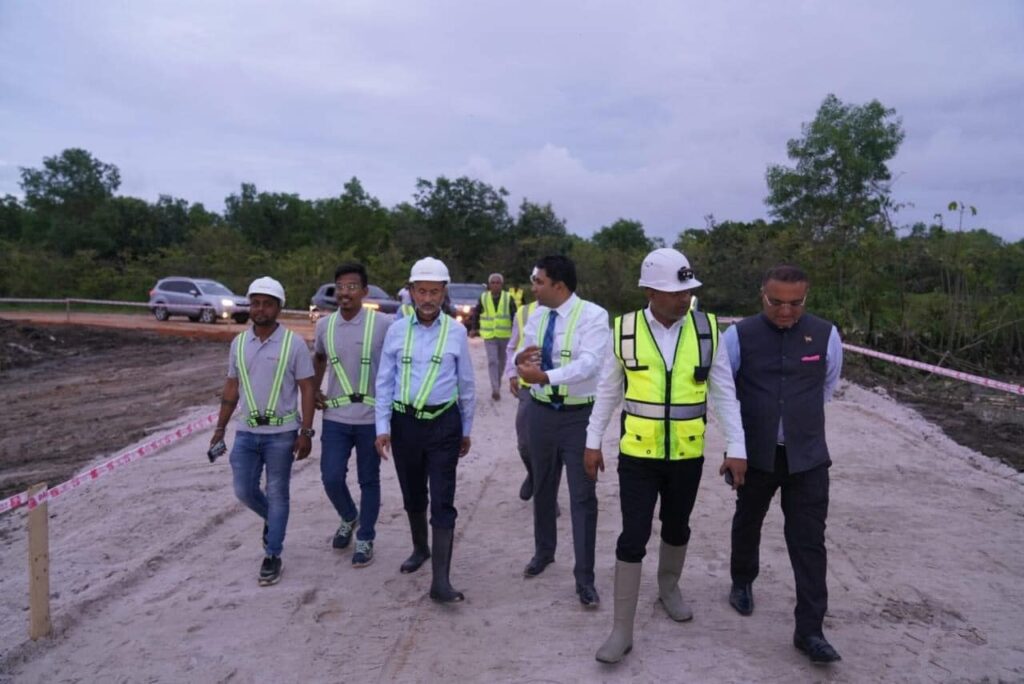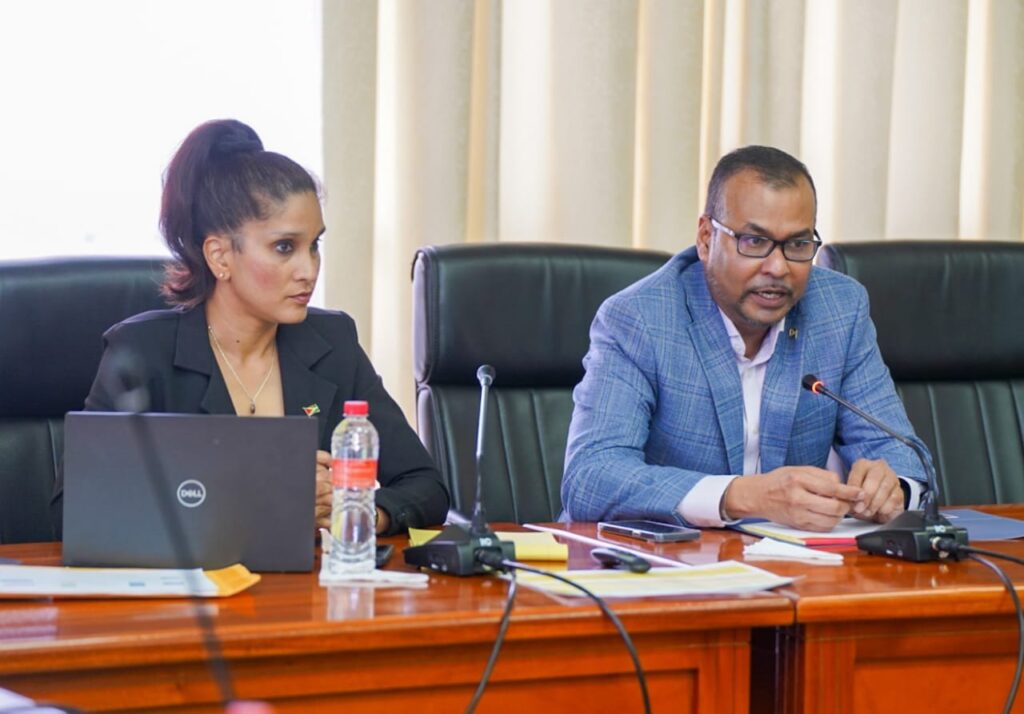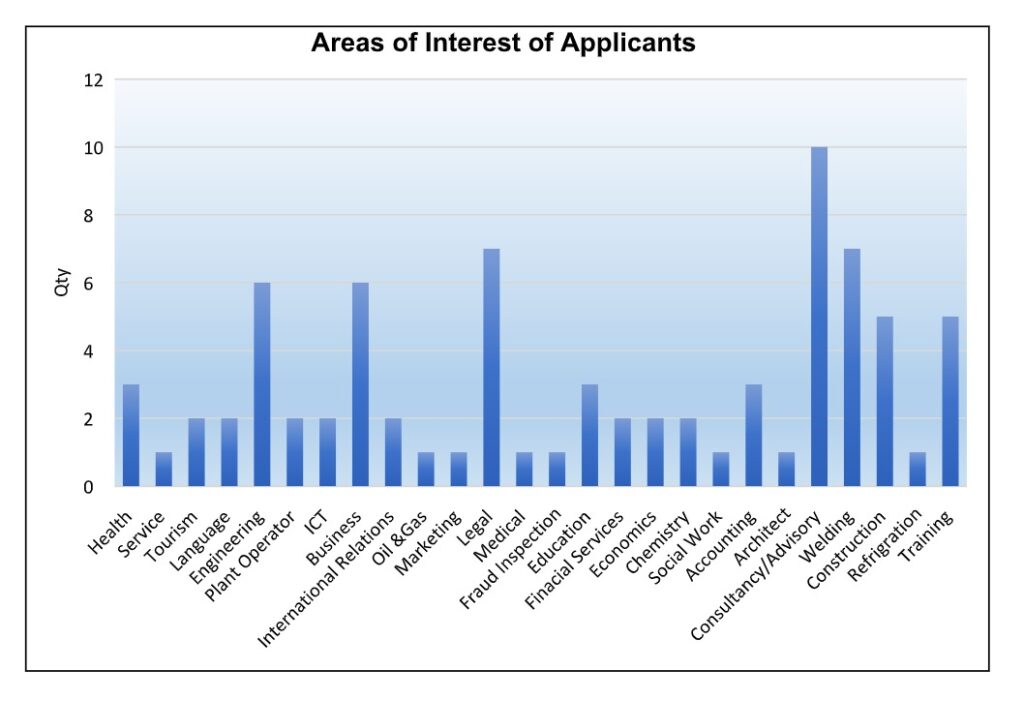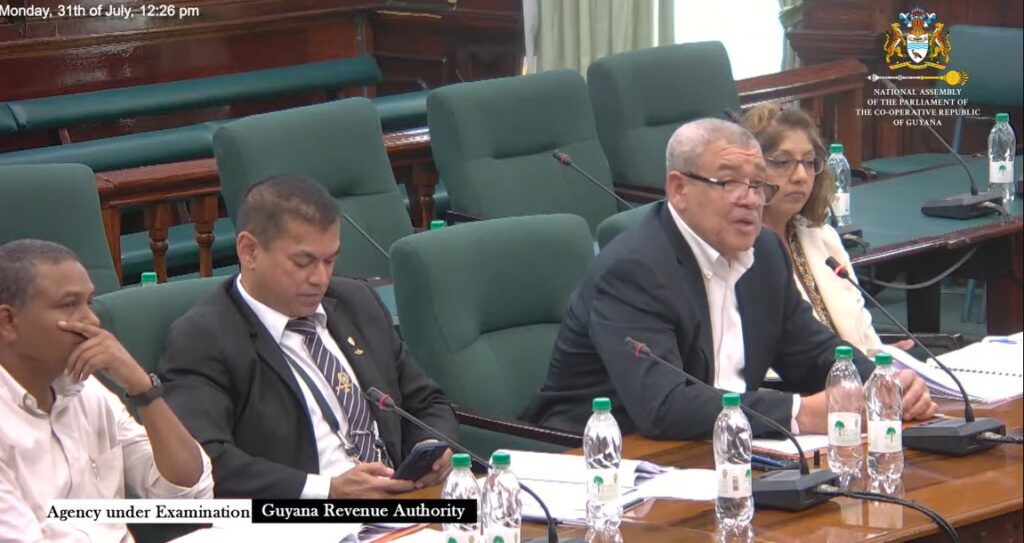
By Vishani Ragobeer
It’s July 22.
Just after the crack of dawn, labourers make their way to construction sites at Little Diamond, East Bank Demerara (EBD). They are building houses for a professional housing scheme – part of the government’s national housing drive.
Like he does every day, Ronson Gray visits one of the sites. Three labourers are laying the steel needed to build the foundation.
Gray is a building contractor and if all goes well, his workers should be able to complete this house – a three-bedroom structure – in about three months’ time.
“On average, if I’m constructing a three-bedroom home…I’d need about three labourers per unit.
“I’m not going to get that all the time. So therefore, you have to create a work plan where you utilise best what you have,” Gray told the News Room while onsite.
What the contractor hinted at is a growing concern over labour shortages in the housing sector and other productive sectors experiencing a rapid expansion in Guyana.

It is a concern highlighted by private sector players and acknowledged by the government. Many hope for speedy solutions before the existing setback becomes a bigger problem.
“I am hoping the powers that be would explore the importation of workers.
“Obviously, that would have to be done in a way that doesn’t put our local skilled workers and labourers at a disadvantage but there is a need for supplemental labour,” Gray stressed.
It isn’t a far-fetched solution.
In July, Public Works Minister Juan Edghill revealed that the India-based Ashoka Buildcon which is constructing the Ogle to Eccles highway was granted permission to hire 60 foreign drivers.
The work permits were granted for an “elementary job like drivers” because the developer demonstrated how their two-year project would have been stalled otherwise, Edghill said.

A greater impetus for imported labour potentially exists, nevertheless.
THOUSANDS NEEDED
Based on a 2021 report from the International Office for Migration (IOM), Guyana needs an additional 100,000 to 160,000 workers to support heightened economic activity in the medium term.
That report is titled “Planning for Prosperity: Labour Migration and Guyana’s Emerging Economy.” And it points out that Guyana’s population of people who are of working age is just about 275,000. The available labour force is “much smaller.”
Even if Guyana was able to harness all of its unemployed, underemployed and discouraged workers, the report stated that the labour force may only increase by 63,500 people, a number still short of what the country needs.
So it was suggested that Guyanese authorities examine attracting and importing labour.

“It is recommended that the government modernise the institutional and legislative framework associated with migration as a matter of priority,” the report, however, stated.
Part of the migration focus, the report noted, should be on engaging the vast Guyanese diaspora where much skilled labour exists.
The Irfaan Ali-led government seems to be seriously considering this. President Ali and members of his cabinet encourage Guyanese in the diaspora to bring their skills and investments back to Guyana.
A specialised diaspora engagement unit has been established in the Ministry of Foreign Affairs and International Cooperation. It functions to help Guyanese abroad easily access opportunities in Guyana or in some cases, reintegrate themselves here.
Foreign Secretary Robert Persaud said the government is mulling immigration policy changes but emphasised that managing migration is a complex issue.

“There’s always the debate, and sometimes it can be controversial, as to how much foreign input do we want to have in our human resources bank and how much more can we do in terms of ensuring that Guyana, not only those domicile but those in the global diaspora, are given the opportunity,” he said at a multi-stakeholders meeting organised in August to address Guyana’s labour needs.
But he added, “… we cannot wait forever on the global diaspora to be responsive too. Projects cannot wait for us to find these Guyanese as much as we want everyone to be part of and involved in.”
Head of the Unit, Rosalinda Rasul told the News Room that remigrants were “able to secure jobs in the construction sector and have successfully established workshops and training schools in welding and fabrication.”
At the end of July, the Unit only had 79 applications from Guyanese living abroad who were seeking immediate employment.

The authorities are figuring out other solutions, too.
Though labour shortages exist in some regions like Region Four, which is Guyana’s business hub and the seat of the capital, the Foreign Secretary said other regions, including hinterland regions, labour surpluses exist.
Guyana’s Vice President Dr. Bharrat Jagdeo recently told reporters that the government believes getting more women into the formal workforce could help.
As the IOM noted in its report, these workers may not be enough to satisfy medium-term needs but the government believes finding more workers locally can help quell the situation now, so that economic expansion is not stalled
To attract these workers, incentives are needed.
Finance Minister Dr. Ashni Singh told another multi-stakeholders meeting that accommodation options and transportation services could attract workers from regions or areas across the country where there are labour surpluses.
He also believes that day care services can be provided to attract workers.
FOCUS ON TRAINING
The government is also banking on training so that Guyanese can eventually work in some of the new, expanding sectors like oil and gas and hospitality services.
New training centres are being constructed across the country. The most recent contracts for new training centres were awarded in July; two companies secured $83 million in contracts to build those facilities.

Teachers’ and nurses’ training programmes have moved online and can now train hundreds more each year.
Private sector players are also banking on long term investments in Guyanese.
Guyana’s first oil and gas centre, which promises to train thousands of Guyanese and foreigners for the lucrative petroleum sector, opened in September 2022 at Lusignan on the East Coast of Demerara (ECD).
Other companies are offering scholarships so Guyanese can either study at the University of Guyana or abroad and then return to work at their companies.
There have been hiccups with training workers, though.
The Guyana Revenue Authority (GRA) has less than half of the staff it needs in the Petroleum Revenue Department that deals with monitoring, auditing and otherwise regulating companies operating in Guyana’s nascent oil and gas sector.

The tax regulator has been training staff to fill its needs, but its Commissioner General Godfrey Statia told the Parliamentary Public Accounts Committee (PAC) that those trained workers are often recruited by oil companies working in Guyana.
Those companies, he said, offer them salaries even higher than his. So Statia believes that the GRA may have to employ foreign workers.
Such occurrences inform the Foreign Secretary’s position that much more deliberation may be needed to ascertain a sound plan to address Guyana’s labour needs/
“I think we have a Guyanese first approach in terms of looking at the opportunities, whether it’s jobs or investments, and we are unapologetic about that but we also recognise that we cannot do it alone and we need that level of skills, the investments and other forms of input,” Persaud said.
“It’s a complex issue so there is no single silver bullet,” Persaud said.
A month after the visit to Ronson Gray’s housing construction site, things are going according to plan.
He has a group of workers that he shuffles around to various projects depending on the need. And he hopes that stability can see him through his current projects.




